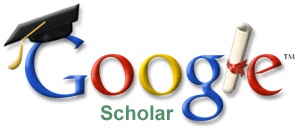Pengembangan Wisata Kota Semarang
Sari
Abstrak
Multiplier effect sektor pariwisata terhadap sektor lain relatif tinggi. Hal tersebut terlihat pada dampak positif di sektor lain apabila sektor pariwisata mengalami peningkatan, khususnya di sektor perdagangan, hotel, restoran dan perhubungan. Pemberdayaan potensi wilayah sebagai daya tarik wisata, sampai saat ini masih belum optimal dan keterlibatan dari pihak terkait juga belum optimal. Untuk keperluan tersebut maka penelitian ini dilakukan. Penelitian ini bertujuan untuk menganalisis keterlibatan stakeholder dalam pengelolaan wisata dan pengembangan wisata Kota Semarang. Objek penelitian adalah wisata budaya (Gubug rembug), wisata sejarah/alam (Goa Kreo) dan wisata kuliner (pusat oleh-oleh Jl. Pandanaran). Sebanyak 12 keyperson diwawancarai sebagi sumber data penelitian. Data hasil wawancara dianalisis dengan software Nvivo 12. Hasil penelitian menunjukkan bahwa keterlibatan stakeholders dalam pengelolaan dan pengembangan wisata Kota Semarang adalah berupa pembinaan dalam proses pengelolaan wisata sejarah, alam dan kuliner.
Kata kunci : pengembangan, pariwisata, Kota Semarang
Tourism Development In Semarang City
Abstract
The multiplier effect of the tourism sector on other sectors is relatively high. This can be seen from the positive impact in other sectors if the tourism sector has increased, especially in the trade, hotel, restaurant and transportation sectors. The empowerment of the region's potential as a tourist attraction has not been optimal and the involvement of related parties has not been optimal. For this purpose, this research was conducted. The purpose of this study was to analyze stakeholder involvement in tourism management and tourism development in the city of Semarang. The object of research is cultural tourism (Gubug Rembug), historical / natural tourism (Goa Kreo) and culinary tourism (souvenir center Jl. Pandanaran). A total of 12 keypersons were interviewed as a source of research data. Interview data were analyzed using Nvivo 12 software. The results showed that the involvement of stakeholders in the management and development of tourism in the city of Semarang was in the form of guidance in the process of managing natural and culinary tourism.
Keywords: development, tourism, Semarang City
Kata Kunci
Teks Lengkap:
PDFReferensi
Bradford, Robert W., Duncan, Peter J., Tarcy, Brian, 2007. Simplified Strategic Planning: A No- Nonsense Guide for Busy People Who Want Results Fast!, [Online] Available: http://www.QuickMBA.com/Strategy/SWOTAnalysis.
Dinas Kebudayaan dan Pariwisata Provinsi Jawa Tengah. 2011-2016.
Godfrey, K., & Clarke, J. (2000). The Tourism Development Handbook: A Practical Approach to Planning and Marketing. London: Continuum.
Hermantoro, Hengky. (2011). Creatif – Based Tourism (Dari Wisata Rekreatif Menuju Wisata Kreatif). Yogyakarta: GalangPress.
Inskeep, Edward, 1991. Tourism Planning: An Integrated and Sustainable Development Approach. Van Nostrand Reinhold, New York.
Inskeep, Edward, 1998. Guide for Local Authorities on Developing Sustainable Tourism. World Tourism Organization, New York.
Kamra, Krishan K. (2001). Managing Tourist Destination. New Delhi-India: Kanishka Publisher Distributors.
Kusuma, Mashita Enggar dan Budisusanto, Yanto. 2015. Aplikasi Google Maps Api dalam Pengembangan Sistem Informasi Geografis (SIG) Pariwisata Berbasis Web (Studi Kasus: Kabupaten Sidoarjo). Jurnal GEOID. Vol. 10 (2), 129-136.
Kotler dan Keller. (2009). Manajemen Pemasaran, Jilid I, Edisi ke 13. Jakarta:
Erlangga
Lee, A. H. J., Wall, G., Kovacs, Kang, S. Y. (2016). Food Clusters and Creative Tourism Development: A Conceptual Framework. The Journal of Rural and Community Development. Vol. 11(2), 72-88.
Puslitbang Kepariwisataan Kemenparekraf RI. (2001).
Soeratno, Lincolin Arsyad. 1998. Metode Penelitian untuk Ekonomi dan Bisnis. Yogyakarta: BPFE.
Sunaryo Bambang. (2013). Kebijakan Pembangunan Destinasi Pariwisata
Konsep dan Aplikasinya di Indonesia. Yogyakarta.
Spillane, J.J. 1987. Pariwisata Indonesia dan Prospeknya. Yogyakarta: Kanisius.
Statistik Daerah Provinsi Jawa Tengah. 2017.
Sugiyono. (2008). Metode Penelitian Bisnis. Penerbit Alfabeta.
Pusdatin Kementerian Pariwisata Indonesia. 2016.
Thompson, (2008), Crafting & Executing Strategy; The Quest for
Competitive advantage, sixteenth edition, McGraw-Hill International Edition.
Undang-Undang Republik Indonesia Nomor 10. Tahun 2009 Tentang Kepariwisataan.
World Tourism Organization. (2004). Indicator of Sustainable Development for Tourism Destination-A Guidebook, Madrid-Spain,World Tourism Organization.
Zen, Moh. Hoiri., Wulandari, Dwi. (2016). Development Strategy of The Tourism Industry in Banyuwangi Regency (Case Study: Natural Park Ijen Crater Banyuwangi). IOSR Journal of Business and Management. Vol. 18(8).
DOI: https://doi.org/10.31294/khi.v12i1.8889










